Historic Monuments of Fes: The Spiritual Soul of Morocco
Introduction
Among Morocco’s imperial cities, Fes stands apart, a city where time seems to pause, and the echoes of a thousand years still whisper through its labyrinthine streets. Known as the spiritual and cultural heart of Morocco, Fes is not just a destination; it’s a living museum where history breathes from every minaret, archway, and artisan’s workshop.
Founded in the 9th century, Fes rose to prominence as a center of learning, religion, and craftsmanship. Its historic monuments are not mere relics of the past; they are vivid reminders of the city’s golden age when scholars, traders, and builders shaped one of the most influential capitals of the Islamic world. Walking through the UNESCO-listed Medina of Fes, travelers encounter a rare blend of Andalusian artistry, Islamic architecture, and Moroccan identity, a harmony that still defines the city today.
For those eager to explore the full splendor of Morocco’s royal heritage, the story of Fes is the perfect starting point. It’s one of the essential stops on any imperial city tour from Fes, where travelers can uncover centuries of culture, devotion, and human creativity woven into the city’s architectural wonders.
In this article, we’ll journey through Fes’s most iconic landmarks, from majestic mosques and ancient madrasas to tranquil gardens and royal palaces, revealing how each monument tells a unique chapter of Morocco’s imperial legacy.
The Origins and Spiritual Legacy of Fes
Long before Marrakech or Rabat rose to prominence, Fes was the beating heart of Moroccan civilization. Founded in the late 8th century by Idris I, a descendant of the Prophet Muhammad, the city quickly became a center of Islamic scholarship and culture. Its strategic location, between the fertile plains of the Saiss Valley and the trade routes connecting the Sahara to the Mediterranean, made it a natural meeting point for merchants, artisans, and scholars.
By the 11th century, Fes had blossomed into a spiritual capital, home to mosques, madrasas, and sanctuaries that reflected both religious devotion and artistic excellence. Even today, the call to prayer from hundreds of minarets creates a symphony that echoes through the Medina of Fes, a daily reminder of the city’s sacred soul.
A Cradle of Knowledge and Faith
One of Fes’s greatest contributions to world history is its dedication to learning. Here stands the University of Al-Qarawiyyin, founded in 859 CE by Fatima al-Fihri, often recognized by UNESCO as the world’s oldest continuously operating university. This institution not only educated generations of scholars in theology, law, and astronomy but also symbolized Morocco’s early embrace of knowledge as a divine pursuit.
Its influence extended far beyond Morocco, shaping intellectual thought across North Africa, Al-Andalus (medieval Muslim Spain), and the wider Islamic world. Today, the Al-Qarawiyyin Mosque and University remain among Fes’s most revered historic monuments, attracting travelers eager to witness a cornerstone of human civilization.
The Medina: A Sacred Labyrinth
No place captures the spiritual essence of Fes better than the Medina of Fes el-Bali, one of the best-preserved medieval cities in the world. Within its walls lie more than 9,000 alleys, where centuries-old mosques, fountains, and artisan souks coexist in perfect harmony. Wandering here feels like entering a living manuscript of Morocco’s past.
From dawn to dusk, the Medina hums with life, the scent of cedarwood, the rhythmic sound of copper being hammered in the Seffarine Quarter, and the gentle prayers of worshippers at neighborhood mosques. Each corner reveals a monument, a memory, and a masterpiece.
For travelers tracing the path of Morocco’s imperial heritage, understanding the spiritual legacy of Fes offers the perfect foundation before exploring the wonders of its architectural monuments, which continue to define the city’s skyline and soul.
The Grand Mosques and Madrasas of Fes
No journey through Fes would be complete without exploring its mosques and madrasas, the spiritual and intellectual backbone of the city. These sacred monuments reveal the deep devotion and refined artistry that shaped Morocco’s identity for over a millennium.
Al-Qarawiyyin Mosque: The Heart of Knowledge
At the center of the Medina of Fes el-Bali stands the Al-Qarawiyyin Mosque, an architectural jewel founded in 859 CE by Fatima al-Fihri. What began as a modest neighborhood mosque soon grew into one of the most prestigious centers of learning in the Islamic world. Over the centuries, it evolved into the University of Al-Qarawiyyin, the world’s oldest continually operating university according to UNESCO.
The mosque’s green-tiled roof and whitewashed arches dominate the skyline of the old city. Inside, intricate zellige mosaics, stucco carvings, and cedar wood ceilings showcase the unparalleled craftsmanship of Fes’s artisans. Non-Muslim visitors can admire its beauty from nearby rooftops or through the arched gates that frame this historic sanctuary.
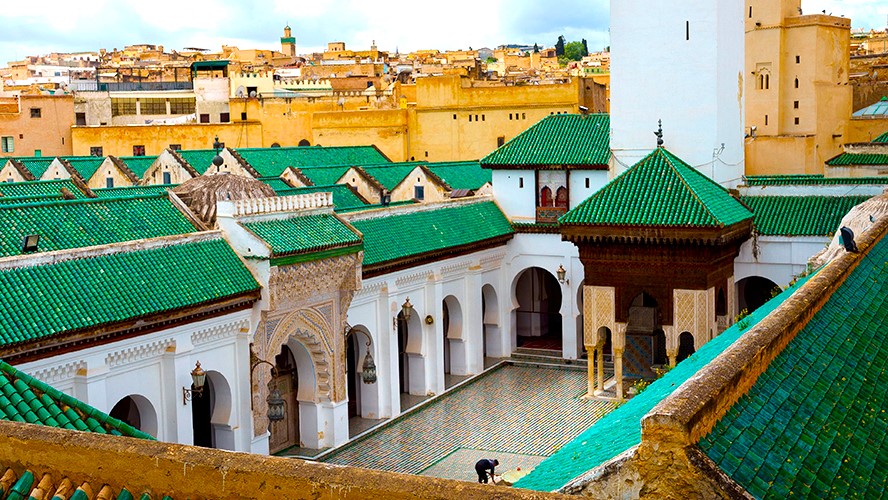
Al-Andalus Mosque: The Sister of Al-Qarawiyyin
Across the river from Al-Qarawiyyin lies the Al-Andalus Mosque, founded in 859 CE, the same year as its twin. Built by Maryam al-Fihri, Fatima’s sister, it reflects a fascinating symmetry in Fes’s religious architecture. The mosque became the spiritual center of the Andalusian quarter, where families who fled Al-Andalus (medieval Muslim Spain) settled and brought with them a rich artistic tradition.
The mosque’s ornate minaret, adorned with green tiles and Kufic inscriptions, remains one of Fes’s most striking landmarks. Its style bridges the aesthetics of North Africa and Andalusia, reflecting the cultural fusion that defines Morocco’s imperial heritage.

Bou Inania Madrasa: A Masterpiece of Marinid Art
If there’s a monument that encapsulates the genius of Moroccan craftsmanship, it is the Bou Inania Madrasa. Built in the 14th century by Sultan Abu Inan Faris of the Marinid dynasty, it served both as a college and a mosque. Unlike many madrasas, Bou Inania remains active for worship, which adds to its timeless allure.
Stepping into its courtyard is like entering a work of art: polished cedar wood, delicate plaster carvings, and geometric zellige tiles adorn every surface. A trickling fountain reflects the light beneath the wooden latticework, creating a tranquil space for reflection and prayer. The madrasa’s minaret, restored to its original glory, stands as one of Fes’s most beautiful silhouettes.
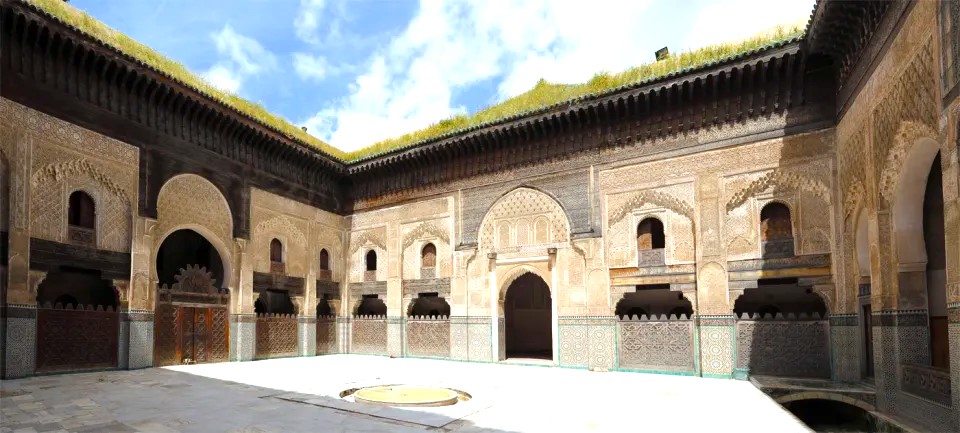
Al-Attarine Madrasa: Harmony in Detail
Just a few steps from Al-Qarawiyyin lies the exquisite Al-Attarine Madrasa, built in the early 14th century. Its name, meaning “the perfumers,” comes from its location near the spice and perfume souk. Every inch of its small courtyard bursts with artistry: marble floors, Kufic calligraphy, and floral motifs that seem to breathe life into the stone.
Scholars once studied theology and logic here, their voices echoing beneath carved cedar ceilings. Today, the madrasa stands as a testament to Fes’s enduring love for knowledge, beauty, and faith, the three elements that define its spirit.
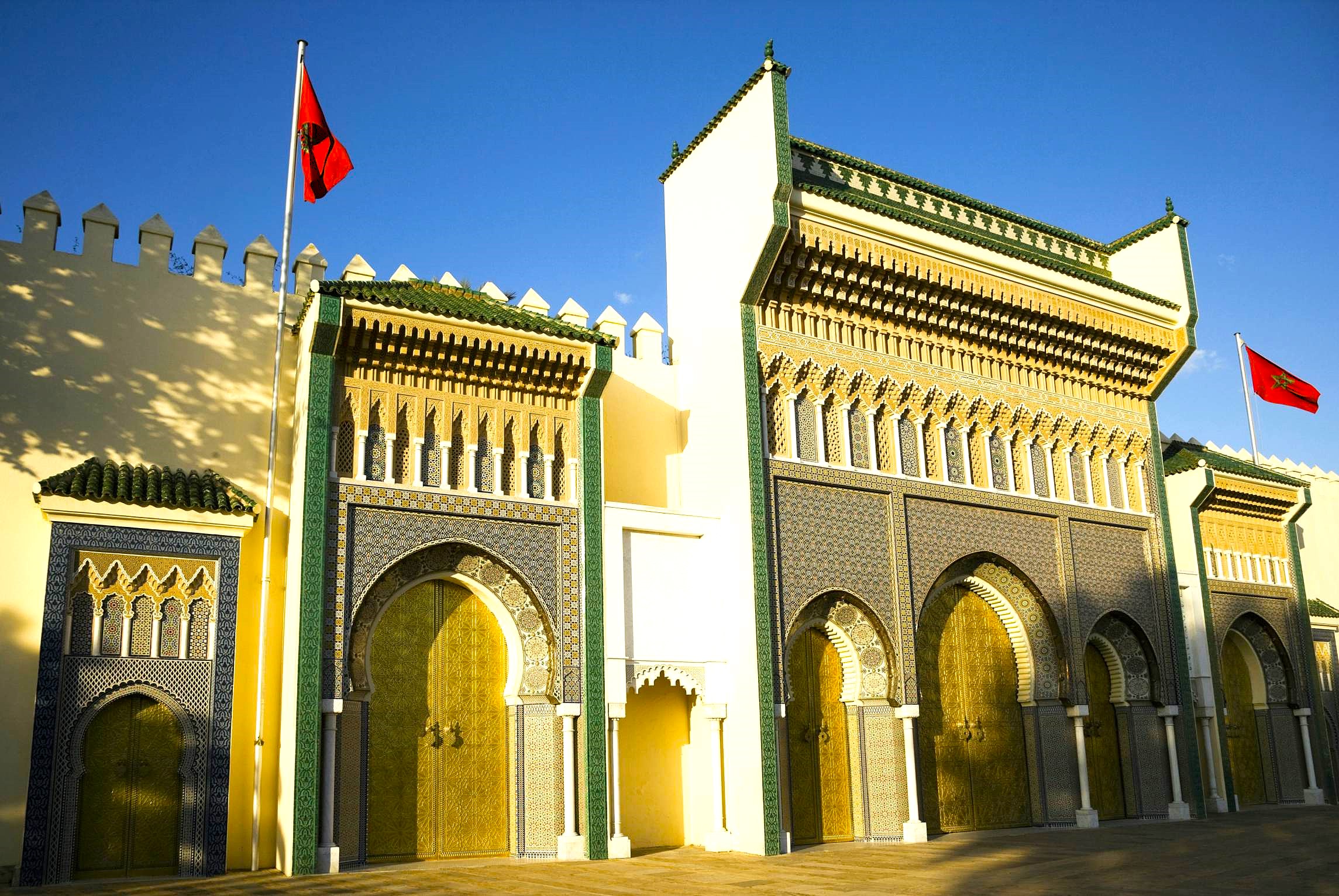
The Royal Palaces and Gates of Fes
Beyond its mosques and madrasas, Fes reveals another layer of its grandeur through its royal palaces and ornate city gates. These monuments reflect the city’s enduring role as a seat of power and prestige for Moroccan dynasties, from the Idrisids to the Alaouites, Morocco’s current ruling family.
Dar al-Makhzen: The Royal Palace of Fes
At the heart of the Fes el-Jdid district lies Dar al-Makhzen, the Royal Palace of Fes. Though the palace complex is closed to the public, its majestic gates alone are a masterpiece worth visiting. Decorated with handcrafted zellige tiles, polished brass doors, and cedar-wood carvings, the entrance radiates regal splendor.
Each of its seven monumental doors symbolizes one of Morocco’s historical dynasties, making the palace not only a royal residence but also a living timeline of Moroccan sovereignty. The surrounding square, Place des Alaouites, offers travelers a perfect vantage point to admire the grandeur of Moroccan design and the balance between Andalusian and Islamic architecture.
Historically, Dar al-Makhzen served as one of the principal residences of Morocco’s sultans, reinforcing Fes’s role as the imperial capital for centuries. Even today, it remains a ceremonial site for royal visits and national celebrations, a reminder of the city’s deep political and cultural significance.

The Gates of Fes: Portals Through Time
Fes is a city of gates, each one marking a transition between the ancient and the modern, the sacred and the everyday. The most famous among them, Bab Bou Jeloud, also known as the Blue Gate, is the official entrance to the Medina of Fes. Built in 1913, this gate is adorned with dazzling blue and green mosaics — colors symbolizing Fes and Islam, respectively.
Passing through Bab Bou Jeloud feels like stepping into another world, the bustling energy of the Medina of Fes el-Bali unfolds immediately beyond, filled with vibrant souks, mosques, and artisans at work.
Another notable gate, Bab Chorfa, guards the northern section of the Medina and leads toward the Merinid Tombs. From here, travelers are rewarded with panoramic views of the entire old city, a breathtaking perspective that captures the grandeur of Fes in a single glance.
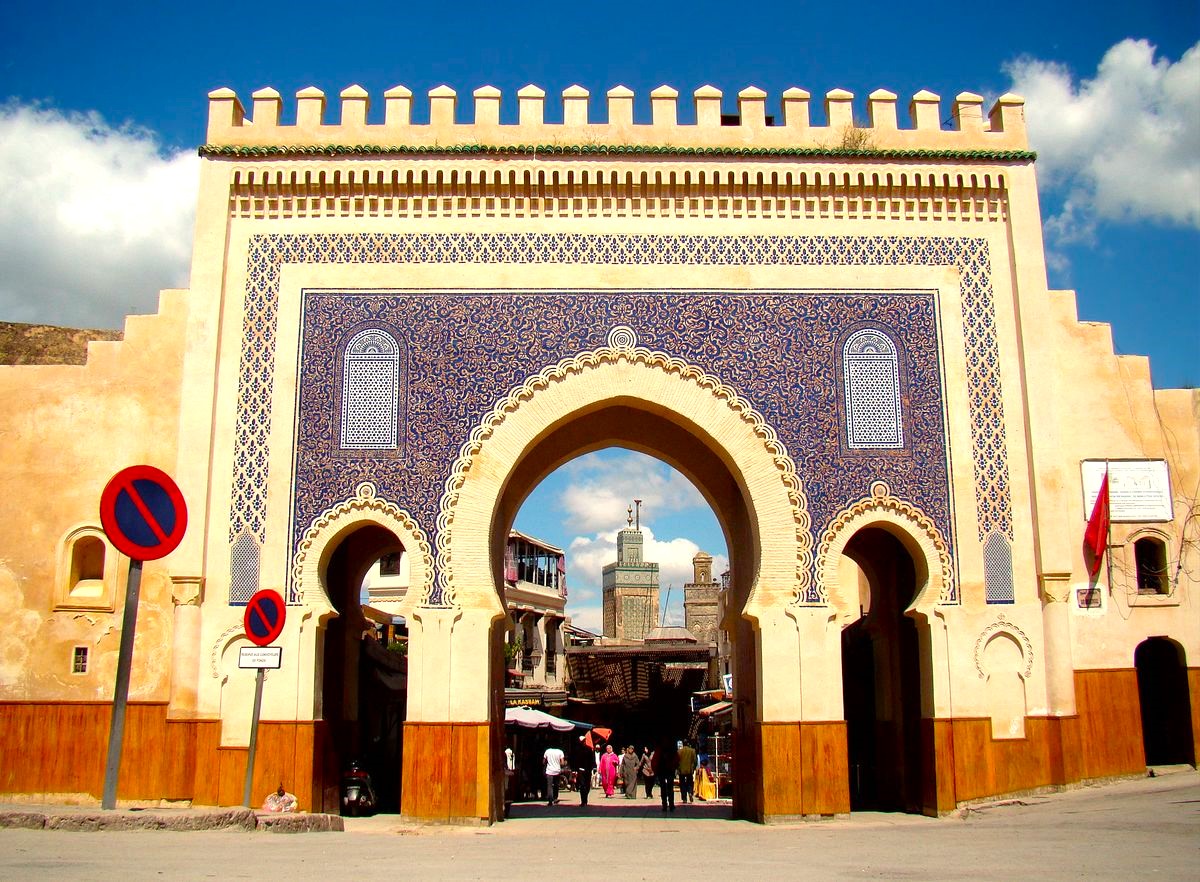
Dar Batha Museum: A Royal Palace Turned Cultural Gem
Originally built as a royal residence by Sultan Hassan I in the 19th century, the Dar Batha Museum today serves as one of Morocco’s finest showcases of traditional art. Located near Bab Bou Jeloud, it houses exquisite examples of zellige tilework, embroidered textiles, wooden artifacts, and ceramic collections from across the country.
The museum’s Andalusian garden, with orange trees, fountains, and fragrant jasmine, provides a tranquil refuge from the Medina’s bustle. It’s an ideal spot for travelers seeking to connect with the city’s artistic and royal legacy in one serene space.
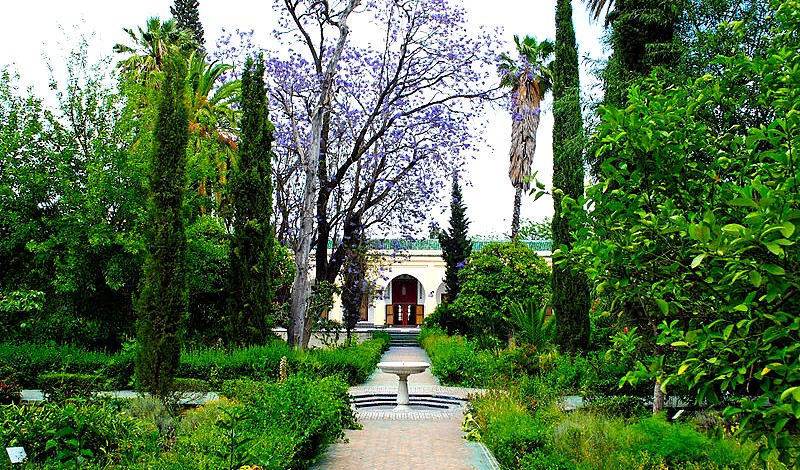
Discover The Historic Monuments of Fes !
Let our local experts at Holiday Morocco Tours Agency help you design a journey that brings the wonders of Fes to life. From personalized itineraries to immersive cultural experiences, we’ll make sure your Moroccan adventure is as unforgettable as the city itself.
Don’t just read about Morocco’s imperial cities! experience their magic firsthand!
The Preservation and Living Heritage of Fes
While centuries have passed since Fes first rose as Morocco’s imperial capital, its historic monuments and living traditions remain remarkably intact. Thanks to ongoing preservation efforts, this ancient city continues to thrive as both a UNESCO World Heritage Site and a living symbol of Moroccan identity.
UNESCO Recognition and Restoration Efforts
The Medina of Fes was inscribed on the UNESCO World Heritage List in 1981, a recognition that underscored its universal value to humanity. The organization praised Fes for its “outstanding universal significance”, not only for its architecture and urban fabric but also for the intangible heritage preserved in its workshops, mosques, and madrasas.
In recent decades, both UNESCO and the Moroccan Ministry of Culture have collaborated to restore key monuments such as the Bou Inania Madrasa, the Al-Qarawiyyin Mosque, and the Nejjarine Museum of Wooden Arts and Crafts. These restorations aim not only to preserve the city’s physical beauty but also to ensure that its ancient techniques, like zellige tilework and carved stucco — continue to be practiced and passed down to younger generations.
A City That Still Lives and Breathes
Unlike many historical cities frozen in time, Fes remains a living city, where ancient crafts and daily life blend seamlessly. Within the walls of the Medina of Fes el-Bali, artisans still craft leather, pottery, and metal goods using techniques perfected over a thousand years. Children attend Quranic schools near centuries-old mosques, and families gather in the same courtyards their ancestors built generations ago.
This coexistence of past and present gives Fes an authenticity that few places on earth can match. Visitors often describe it as a time capsule, where modern Morocco coexists with its medieval roots — not as a display for tourists, but as a genuine continuation of history.
Cultural Festivals and Revived Traditions
Fes also celebrates its legacy through annual cultural festivals that bring its historic settings to life. The Fes Festival of World Sacred Music, held each summer, transforms ancient courtyards and gardens into stages for artists from around the globe. It’s a celebration of spirituality and harmony — values that lie at the heart of Fes’s identity.
Other local events, like the Handicrafts Fair and Sufi gatherings, keep the spirit of Moroccan creativity and devotion alive. These festivals remind the world that the soul of Fes lies not just in its monuments but in the voices, songs, and crafts of its people.
Heritage for the Future
Preserving Fes is about more than conserving its stones, it’s about safeguarding a way of life. Through initiatives supported by UNESCO, the Aga Khan Trust for Culture, and local authorities, restoration projects now focus on empowering local artisans, training youth in traditional skills, and revitalizing neighborhoods within the old Medina.
The result is a city that continues to live, breathe, and inspire, ensuring that the story of Fes will be told not just in history books, but through the generations yet to come.
Embark on Your Journey Through the Historic Monuments of Fes
To walk through Fes is to walk through time. Its historic monuments, from the scholarly courtyards of Al-Qarawiyyin to the dazzling mosaics of Bou Inania, whisper stories of devotion, power, and creativity that shaped not only Morocco but the broader Islamic world. Every gate, madrasa, and marketplace reveals a piece of a grand mosaic, one that continues to evolve, breathe, and inspire.
Fes is not just a destination; it’s an encounter with living history. Whether you’re tracing the steps of scholars, exploring the rhythmic sounds of the artisan quarters, or admiring the golden light on its ancient rooftops, the city invites you to slow down and connect deeply with its timeless soul.
